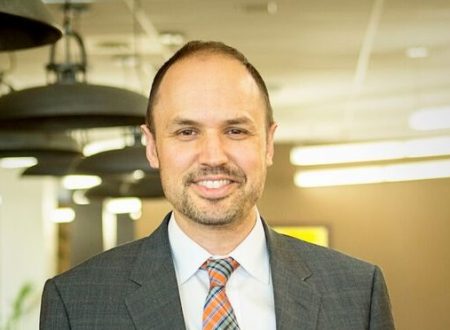Much has been said over the last 4 years about the roll out of Ontario’s Green Energy Act, and the numerous versions of the associated Feed-in-Tariff (“FIT”) program governing the development of renewable energy projects in the province. There has been controversy about the nature and location of the projects developed, the legality of domestic content requirements in light of Canada’s world trade obligations, challenges predicting whether a project application will be accepted, and whether the legislative initiative has truly achieved its goals.
Amidst all the chatter about the Green Energy Act, one thing is clear: the Aboriginal Loan Guarantee Program (“ALGP Program”) is a phenomenal tool to allow aboriginal communities to partner in project development within their traditional territories. For those communities interested in renewable energy, the ALGP Program has been a rare and welcome aligning of governmental policy and aboriginal economic self- determination. The merits of the ALGP Program should upheld even if the hope fades for a new Large-FIT application window – it is a key example of a creative financing mechanism that is useful even beyond the renewable energy sector.
By way of background: A guarantee is a form of security document that accompanies a financial transaction where a third party agrees to make loan payments if a borrower cannot. A government guarantee is an attractive incentive to a lender because of the government’s stability: the likelihood of successfully calling on the guarantee is virtually assured. This decrease in repayment risk allows a lender to loan money to a borrower at a lower interest rate, which increases the returns available to the borrower (because less of the distributions to the borrower are being used to repay debt.)
In a typical project, each partner is responsible for raising its proportionate share of working capital to ensure there is enough money to build the project. This working capital is known as the “equity requirement”. The aboriginal community must raise an equity requirement that is proportionate to the community’s percentage of project ownership (e.g. in 50-50 partnerships, the community is responsible for half of the equity requirement). Aboriginal communities need to borrow this money, at least for Large FIT projects. Under the ALGP Program, an Aboriginal Loan Guarantee is available to support 75% of equity requirement that the aboriginal community must raise.
It is challenging for First Nations to raise this working capital without the benefit of an Aboriginal Loan Guarantee. A conservative estimate of the expected return on investment (“ROI”) for projects granted FIT contracts typically hovers between 9% and 12%. For communities with poor, or (as is more often the case) non-existent, credit histories, the likelihood of being able to borrow the funds at a rate lower than the ROI remains virtually non-existent. In this case, the risk of not receiving enough distributions to make loan payments outweighs any other benefits that an aboriginal community might realize from owning a stake in the project. Thus, the Aboriginal Loan Guarantee, which significantly lowers the cost of borrowing, can make the difference between whether a community is able (to say nothing about willing) to be a partner in these projects.
In terms of the funds necessary to develop and construct a project, we should clarify that the equity that the aboriginal community must raise is far from the full amount of money that would actually be needed for the project overall. Senior construction financing provides the majority of the funds required for project construction (between 70% to 80% of construction costs). An Aboriginal Loan Guarantee therefore only supports a portion of the necessary overall financing. The fact that senior construction funding comes from a different lender means that the province can limit its own ultimate liability. It also means there is another, arguably more rigorous, party (i.e. the lender providing the senior construction funding) who evaluates whether the project merits financing. The province reviews a significant amount of project information in order to grant an Aboriginal Loan Guarantee, and frequently only conducts this review after the project has obtained the senior construction financing. Taxpayers can take comfort in the fact that only fully realized projects that have withstood the scrutiny of both the senior lender and the province receive Aboriginal Loan Guarantees.
The ALGP Program is such a welcome change because it signifies a committed policy of supportive inclusion, and recognizes that Ontario’s growth must not come at the expense of the livelihoods of its First Nations. Many aboriginal communities have been anticipating the (long-delayed) announcement by the Ontario Power Authority of the next application window for Large FIT projects, now that they have gained some comfort and familiarity with the returns available from micro-FIT and small FIT projects. Whether or not the announcement about Large FIT projects ever occurs, the legacy of the ALGP Program should not fall off the radar of aboriginal communities seeking to advance economic development initiatives in their traditional territories. Governmental guarantees and other creative financial mechanisms that serve to benefit First Nations certainly needn’t be limited to the renewable energy sector.
Oliver W. MacLaren is an associate with Olthuis, Kleer, Townshend LLP in Toronto.
Related Posts

OKT Hosts UN Working Group on Business and Human Rights
On May 25, 2017, OKT hosted the UN Working Group on the issue of human rights and transnational corporations and other business enterprises (the “Working Group”). The Working Group was…
Read More...
Taykwa Tagamou Nation and OPG partnership a success
OKT is pleased to congratulate Coral Rapids Power Corporation (“CRP”) and Taykwa Tagamou Nation (“TTN”) on the completion of the construction and commencement of commercial operation of the Peter…
Read More...
Alberta's first renewable energy procurement process
OKT's feedback on the key provisions of the Renewable Electricity Support Agreement
OKT is pleased to share on this blog the comments we have sent to the Alberta Electric System Operator…
Read More...

